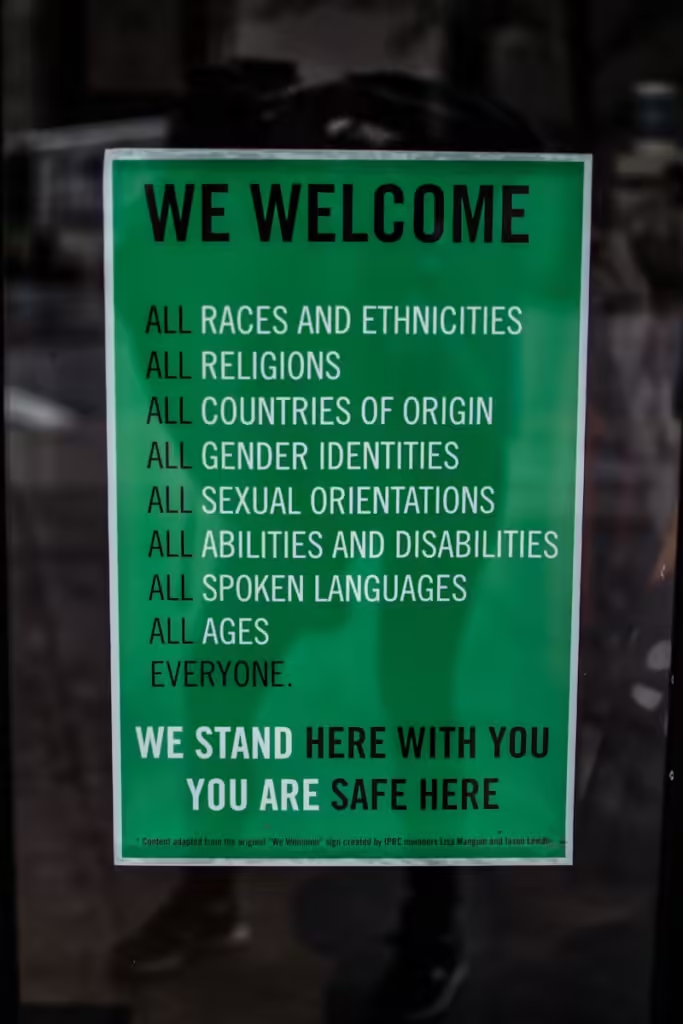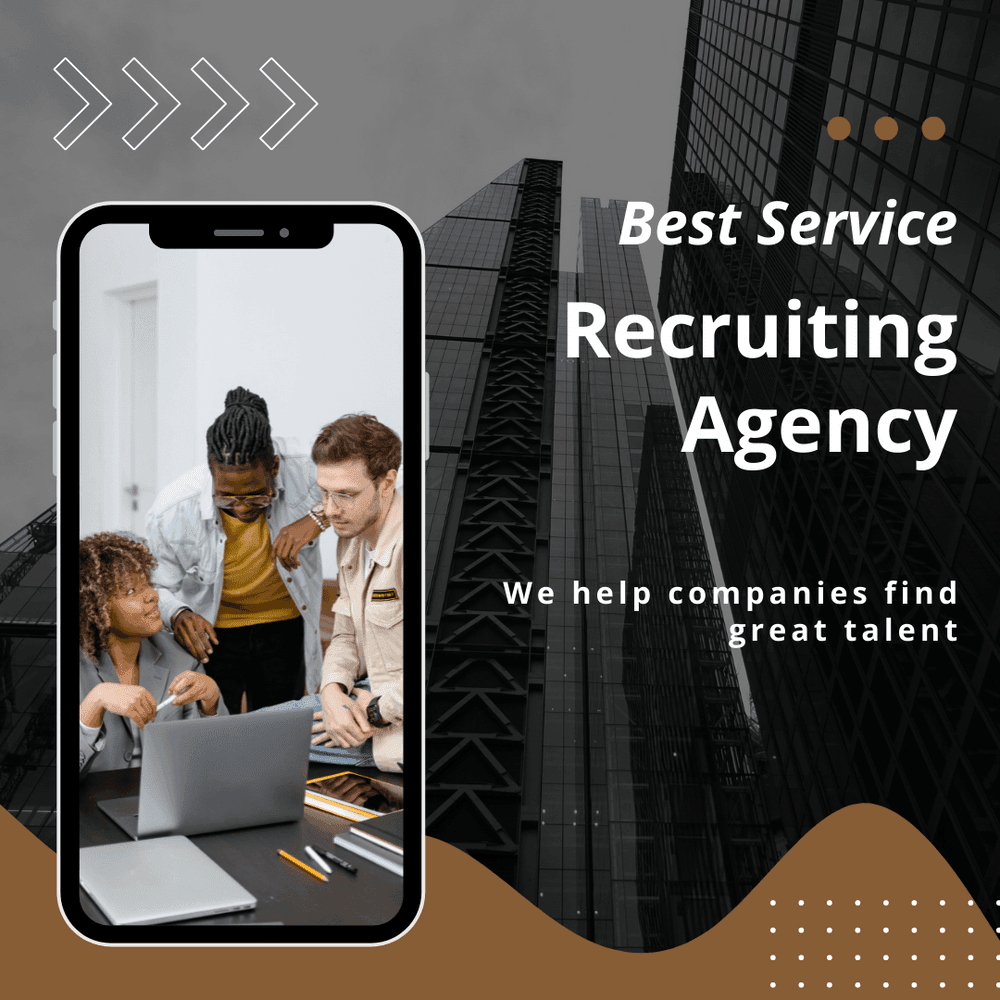
Introduction
In today’s job market, being a diverse candidate has its own benefits.
However getting a job as a diverse candidate or advancing in your career may not still be easy. This is despite many companies actively seeking to build more inclusive workplaces.
The current landscape of diversity hiring presents a mixed picture:
- Positive trends: Many companies are implementing diversity and inclusion (D&I) initiatives, with 69% of executives rating D&I as an important issue.
- Ongoing challenges: Despite these efforts, diverse candidates still face hurdles. For instance, résumés with “white-sounding” names receive 50% more callbacks than Similar résumés with “African-American sounding” names.
As a diverse candidate, you may find yourself wondering:
- How can I present my unique value to potential employers?
- What strategies can I use to stand out in a sea of applicants?
- How do I navigate the job search process when diversity isn’t explicitly mentioned in job postings?
I have spent the past 35 years as an executive responsible for hiring thousands of employees for global companies across multiple industries and have worked with the boards to execute the strategy for hiring diverse candidates. In addition, as a diverse candidate myself, I have had to use some of these strategies myself during my own job search.
My goal in This article is to answer these questions and more, providing you diverse candidates with practical, actionable techniques to get in front of recruiters and secure their dream job.
Whether you’re a woman in tech, a person of color in finance, or any underrepresented professional seeking to advance your career, these strategies will help you leverage your diversity as a strength.
Table of contents
- 1. Crafting a Standout Resume and LinkedIn Profile as a Diverse Candidate
- 2. Leveraging Professional Networks and Associations of Diverse Candidates
- 3. Mastering the Art of Personal Branding
- 4. Targeting Companies with Strong Diversity Initiatives
- 5. Navigating the Job Application Process
- 6. Acing the Interview as a Diverse Candidate
- 7. Negotiating Offers and Advocating for Yourself
- 8. Continuing Professional Development
- Frequently Asked Questions (FAQ)
- 8. Continuing Professional Development
- 7. Negotiating Offers and Advocating for Yourself
- 6. Acing the Interview as a Diverse Candidate
- 3. Mastering the Art of Personal Branding
- 2. Leveraging Professional Networks and Associations of Diverse Candidates
In the following sections, we’ll explore eight proven strategies to help you catch recruiters’ attention, navigate the hiring process, and ultimately land the job you deserve.
Are you ready to take control of your career and make your mark in the professional world? Let’s dive in!
1. Crafting a Standout Resume and LinkedIn Profile as a Diverse Candidate
In today’s digital age, your resume and LinkedIn profile are often your first introduction to potential employers. As a diverse candidate, it’s crucial to leverage these tools effectively to showcase your unique value and catch recruiters’ attention.
Highlighting Diversity Without Oversharing
When crafting your resume and LinkedIn profile, the goal is to subtly highlight your diverse background without making it the sole focus. Here are some strategies to consider:
- Use your name: If you have a name that reflects your cultural background, consider using it proudly. Studies show that 85% of employers value cultural diversity in the workplace.
- Languages: List any languages you speak, even if they’re not directly related to the job. Multilingualism is a valuable skill in today’s global business environment.
- Professional associations: Include memberships in diversity-focused professional organizations, such as the National Society of Black Engineers or the Association of Latino Professionals for America.
In my own job search efforts as a candidate, i have found my ability to speak multiple languages to be a great attraction for global companies having operations in multiple countries.
Showcasing Unique Perspectives and Experiences
Your diverse background gives you a unique lens through which to view the world and solve problems. Here’s how to showcase this:
- Achievements with impact: Highlight accomplishments that demonstrate how your diverse perspective contributed to success. For example: “Led a cross-cultural team to develop a marketing campaign that increased engagement among diverse consumer segments by 30%.”
- Volunteer work: Include relevant volunteer experiences, especially those related to diversity and inclusion initiatives.
- Skills section: Include soft skills that are often associated with diverse candidates, such as “cross-cultural communication” or “adaptability.”
Optimizing for ATS and Recruiter Searches
To ensure your resume and LinkedIn profile are found by recruiters, consider these optimization techniques:
- Keyword optimization: Use industry-specific keywords and phrases throughout your resume and LinkedIn profile. Tools like JobScan can help you match your resume to specific job descriptions.
- LinkedIn SEO: Optimize your LinkedIn headline and summary with relevant keywords. For example: “Bilingual Marketing Professional | Diversity Advocate | Data-Driven Strategist”
- Skills endorsements: On LinkedIn, seek endorsements for skills that highlight your diverse background and professional expertise.
| Resume | |
| Use ATS-friendly format | Professional photo |
| Include relevant keywords | Compelling headline |
| Quantify achievements | Detailed “About section” |
| Tailor for each application | Complete work history |
| Proof read for errors | Skill Endorsements |
Remember, your resume and LinkedIn profile are living documents. Regularly update them to reflect your growing skills and experiences. By thoughtfully highlighting your diverse background and unique value proposition, you’ll increase your chances of catching a recruiter’s eye and moving forward in the hiring process.
2. Leveraging Professional Networks and Associations of Diverse Candidates
Networking is a crucial aspect of any job search, but for diverse candidates, it can be particularly powerful. By connecting with the right people and organizations, you can uncover hidden opportunities and gain valuable insights into companies that truly value diversity.
Joining Diversity-Focused Professional Groups
Finding and joining the right professional groups can significantly boost your job search efforts. Here’s how to discover these valuable networks:
- Online directories: Websites like DiversityInc and Professional Diversity Network offer comprehensive lists of diversity-focused professional organizations.
- Industry-specific searches: Use search engines with terms like “[your industry] diversity association” or “[your demographic] professional network in [your field]”.
- LinkedIn Groups: Search for and join groups related to your industry and diversity background. For example, “Women in Tech” or “Black Professionals in Finance”.
- Alumni networks: Many universities have diversity-focused alumni groups. Check with your alma mater’s career services or alumni office.
- Social media: Follow diversity-focused hashtags on Twitter or Instagram to discover relevant organizations and events.
Personal Secret: As a Talent Acquisition leader, my recruiters and I have always looked to and sourced hundreds of candidates from diversity groups since we could not always find them on job boards or LinkedIn.
Once you’ve identified relevant groups, actively participate in their events and online discussions. Some notable organizations to consider include:
- National Association of Asian American Professionals (NAAAP)
- Out in Tech (for LGBTQ+ professionals in technology)
- Hispanic National Bar Association (for Hispanic legal professionals)
- National Society of Black Engineers (NSBE)
Attending Industry Events and Conferences
Industry events and conferences provide excellent opportunities to network and learn about companies that prioritize diversity. Consider the following strategies:
- Diversity-focused events: Attend job fairs and conferences specifically for diverse professionals, such as the NAACP Career Fair or Grace Hopper Celebration for women in computing.
- Speaker opportunities: Offer to speak at events or participate in panel discussions. This can raise your profile and demonstrate your expertise.
- Virtual events: Don’t overlook online conferences and webinars, which can be more accessible and offer networking opportunities through chat features and virtual breakout rooms.
Pro tip: Before attending any event, research the companies and speakers that will be present. Prepare thoughtful questions and talking points to make meaningful connections.
Building Relationships with Recruiters and Hiring Managers
Developing relationships with recruiters and hiring managers can give you a significant advantage in your job search. Here’s how to approach this:
- LinkedIn connections: Identify and connect with recruiters and hiring managers at companies you’re interested in. Send a personalized message explaining your interest.
- Informational interviews: Request brief informational interviews to learn more about a company’s diversity initiatives and potential opportunities.
- Employee referrals: Leverage your network to get introductions to employees at target companies. Employee referrals often carry more weight in the hiring process.
- Follow up: After meeting someone at an event or online, follow up with a personalized message or email to keep the connection alive.
Remember, networking is about building genuine relationships, not just asking for jobs. Focus on how you can provide value to others in your network, and the opportunities will often follow naturally.
By actively participating in professional groups, attending industry events, and building meaningful relationships, you’ll expand your network and increase your visibility to potential employers who value diversity.
3. Mastering the Art of Personal Branding
In today’s competitive job market, a strong personal brand can set you apart from other candidates and showcase your unique value as a diverse professional. Your personal brand is the narrative you create about yourself, your skills, and your experiences. It’s how you present yourself to potential employers and network connections.
Developing a Compelling Personal Story
Your personal story is at the core of your brand. It should highlight your unique journey, skills, and perspectives as a diverse candidate. Here’s how to craft it:
- Identify your unique value proposition: What makes you stand out? This could be your diverse background, unique skill set, or particular experiences.
- Craft your elevator pitch: Develop a 30-second summary of who you are, what you do, and what you’re looking for in your career.
- Use the STAR method: When sharing experiences, use the Situation, Task, Action, Result format to make your stories more impactful and memorable.
Creating Content That Showcases Your Expertise
Content creation is a powerful way to demonstrate your knowledge and establish yourself as a thought leader in your field. Here are some ideas:
- Start a blog: Write articles about your industry, sharing your unique insights as a diverse professional.
- Contribute guest posts: Offer to write for industry publications or popular blogs in your field.
- Create videos or podcasts: If writing isn’t your strength, consider other media formats to share your expertise.
- Participate in online forums: Answer questions on platforms like Quora or Reddit to showcase your knowledge.
Utilizing Social Media Platforms Effectively
Social media is a crucial tool for building and promoting your personal brand. Here are practical tips for using different platforms:
- Optimize your profile: Use a professional photo, craft a compelling headline, and write a detailed “About” section.
- Post regularly: Share industry news, your own articles, or thoughts on current trends. Aim for 2-3 posts per week.
- Engage with others: Comment on posts from industry leaders and join relevant group discussions.
- Use hashtags: Include relevant hashtags in your posts to increase visibility. For example: #DiversityInTech #WomenInSTEM
- Craft a strong bio: Use your 160 characters wisely to highlight your expertise and interests.
- Tweet consistently: Aim for 1-2 tweets per day, mixing original content with retweets and replies.
- Participate in Twitter chats: Join industry-specific chats to network and share your insights.
- Follow thought leaders: Engage with influencers in your field to increase your visibility.
- Create a professional account: Separate your professional presence from your personal one.
- Use Instagram Stories: Share behind-the-scenes glimpses of your work life or quick tips related to your industry.
- Leverage IGTV: Create longer-form video content to dive deeper into topics related to your expertise.
- Use relevant hashtags: Research and use hashtags that are popular in your industry and among diverse professional groups.
General Social Media Tips
- Be consistent: Use the same profile picture and similar bios across platforms for brand recognition.
- Share diverse content: Mix personal insights, industry news, and interactive content like polls or questions.
- Engage authentically: Respond to comments and messages promptly and genuinely.
- Monitor your online presence: Regularly Google yourself to ensure your online image aligns with your personal brand.
- Be mindful of privacy: Adjust your privacy settings and be cautious about what you share publicly.
| Daily | Weekly |
| Check Notifications | Publish original content |
| Engage with others’ content | Participate in a twitter chat or LinkedIn group |
| Share an industry related post | Connect with new professionals in your field |
Remember, building a strong personal brand takes time and consistency. Be patient and focus on providing value to your network. As a diverse candidate, your unique perspectives and experiences are your strength – let them shine through in your personal brand.
4. Targeting Companies with Strong Diversity Initiatives
As a diverse candidate, finding an employer that truly values and supports diversity can be crucial for your long-term career satisfaction and growth. In this section, we’ll explore how to research companies’ diversity and inclusion efforts, identify diversity-friendly employers, and connect with employee resource groups (ERGs).
Researching Companies’ Diversity and Inclusion Efforts
When researching potential employers, it’s important to look beyond surface-level diversity statements. Here are some practical tips and sources to help you dig deeper:
- Company websites: Start with the company’s careers page or dedicated diversity and inclusion section. Look for:
- Detailed diversity reports or statistics
- Specific diversity goals and progress updates
- Profiles of diverse employees in leadership positions
- Annual reports: For public companies, review their annual reports (often found in the “Investor Relations” section) for information on diversity initiatives and workforce demographics.
- Diversity-focused job boards: Websites like DiversityJobs.com and IMDiversity list employers committed to diverse hiring practices.
- Third-party rankings and reports:
- Social media: Follow companies on LinkedIn, Twitter, and Instagram. Look for posts about diversity events, employee spotlights, and ERG activities.
- Glassdoor: Check company reviews, paying special attention to comments from diverse employees about company culture and inclusion efforts.
- News and press releases: Use Google News to search for recent articles about a company’s diversity initiatives or any diversity-related issues they’ve faced.
Identifying Diversity-Friendly Employers
To identify truly diversity-friendly employers, look for these key indicators:
- Diverse leadership: Check the company’s leadership team and board of directors for representation.
- Transparent reporting: Companies serious about diversity often publish detailed diversity reports with concrete goals and metrics.
- Inclusive benefits: Look for benefits like parental leave policies, cultural holiday observances, or coverage for gender affirmation procedures.
- External partnerships: Check if the company partners with diverse professional organizations or sponsors diversity-focused events.
- Awards and recognition: Has the company received any awards for their diversity efforts from reputable organizations?
As a candidate, Glassdoor has always been a handy tool for me to identify diversity employers and their practices.
Connecting with Employee Resource Groups (ERGs)
ERGs can provide valuable insights into a company’s culture and support for diverse employees. Here’s how to connect with them:
- Company websites: Many companies list their ERGs on their careers or diversity pages. Look for groups that align with your background or interests.
- LinkedIn: Search for ERG leaders or members from target companies and request to connect. Send a polite message expressing your interest in learning more about their experiences.
- Professional associations: Some ERGs partner with external professional associations. Check if your professional group has connections with company ERGs.
- Career fairs: At diversity-focused career fairs, company representatives are often ERG members. Take this opportunity to ask about their experiences.
- Informational interviews: When networking with company employees, ask about active ERGs and how they contribute to the company culture.
Pro tip: Even if you’re not yet an employee, some companies allow prospective candidates to attend ERG events. Don’t be afraid to ask if this is a possibility.
To help you in your research, here’s a quick checklist of diversity indicators to look for:
| Indicator | Where to Find |
| Diversity statistics | Company website, annual reports |
| D&I initiatives | Careers page, press releases |
| ERG information | Company website, LinkedIn |
| Diverse leadership | Leadership team page, LinkedIn |
| External partnerships | Company news, social media |
| Inclusive benefits | Careers page, job postings |
| Awards & recognition | Company website, third-party rankings |
By thoroughly researching and targeting companies with strong diversity initiatives, you’ll increase your chances of finding an employer where you can thrive as a diverse professional.
5. Navigating the Job Application Process
Decoding Job Descriptions for Diversity Cues
- Look for phrases like “inclusive workplace,” “diverse perspectives welcomed,” or “equal opportunity employer”
- Pay attention to gender-neutral language and flexible requirements
- Note mentions of ERGs or diversity initiatives
Tailoring Applications to Highlight Relevant Skills and Experiences
- Align your experiences with job requirements, emphasizing transferable skills
- Use industry-specific keywords from the job description
- Highlight projects or achievements that showcase your unique perspective
Following Up Strategically After Applying
- Wait 1-2 weeks before following up
- Reach out to the hiring manager or recruiter via email or LinkedIn
- Reiterate your interest and briefly mention how your diverse background adds value
6. Acing the Interview as a Diverse Candidate
Preparing Diversity-Related Talking Points
- Develop stories that highlight your unique problem-solving approaches
- Prepare examples of how your diverse background has positively impacted your work
Addressing Potential Biases Confidently
- Be prepared to redirect conversations if you feel uncomfortable
- Focus on your qualifications and experiences relevant to the role
Asking Insightful Questions About Company Culture and Inclusion
- Inquire about ERGs and diversity initiatives
- Ask about opportunities for diverse employees to contribute to company culture
7. Negotiating Offers and Advocating for Yourself
Understanding Your Market Value
- Research salary ranges for your role and location using tools like Glassdoor or Payscale
- Consider the total compensation package, including benefits and growth opportunities
Discussing Diversity-Related Benefits and Initiatives
- Ask about mentorship programs for diverse employees
- Inquire about professional development opportunities related to diversity and inclusion
Advocating for Equitable Compensation and Opportunities
- Prepare data to support your requested salary
- Discuss potential for advancement and leadership opportunities
8. Continuing Professional Development
Seeking Mentorship and Sponsorship
- Look for mentors both within and outside your organization
- Seek sponsors who can advocate for your career advancement
Pursuing Certifications and Skills Development
- Identify in-demand skills in your industry
- Look for diversity-focused leadership programs
Staying Informed About Industry Trends and Diversity Issues
- Subscribe to industry publications and diversity-focused newsletters
- Attend webinars and conferences on diversity in your field
Conclusion
As a diverse candidate, you bring unique perspectives and valuable experiences to the table. By implementing these strategies – from crafting a standout resume to advocating for yourself during negotiations – you can effectively showcase your strengths and find an employer that truly values diversity.
Remember, your diverse background is an asset. Stay confident, persistent, and true to yourself throughout your job search journey. With the right approach and mindset, you’ll not only find a great job but also pave the way for other diverse candidates in your field.
Frequently Asked Questions (FAQ)
- Q: Should I always disclose my diverse background in job applications? A: It’s a personal choice. Focus on highlighting skills and experiences relevant to the job. If your diverse background directly relates to the role or company values, you may choose to emphasize it.
- Q: How can I tell if a company’s diversity efforts are genuine or just for show? A: Look for concrete actions and results, not just statements. Check for diverse representation in leadership, transparent diversity reports, and active ERGs.
- Q: What should I do if I face discrimination during the hiring process? A: Document the incident, and consider reporting it to the company’s HR department or the Equal Employment Opportunity Commission (EEOC). Seek support from diversity-focused professional organizations.
- Q: How can I network effectively as an introvert? A: Start with online networking through LinkedIn or industry forums. Attend smaller events or webinars, and prepare talking points in advance to feel more comfortable.
- Q: Is it appropriate to ask about diversity initiatives during an interview? A: Yes, it’s perfectly appropriate and can show your genuine interest in the company culture. Frame your questions positively, focusing on how you can contribute to these initiatives.
- Q: How can I make my resume stand out without explicitly mentioning my diverse background? A: Focus on your unique achievements, skills, and experiences. Highlight projects where you’ve brought a fresh perspective or solved problems creatively.
- Q: What if I don’t meet all the job requirements? Should I still apply? A: Yes, especially if you meet most key requirements. Studies show that diverse candidates, particularly women, often hesitate to apply unless they meet 100% of criteria. Focus on your transferable skills and potential to learn.
- Q: How can I build confidence for job interviews? A: Practice with mock interviews, prepare specific examples of your achievements, and remind yourself of your unique value. Consider working with a career coach who specializes in diverse candidates.
- Q: What are some red flags that a company might not be truly inclusive? A: Lack of diversity in leadership, vague or non-existent diversity initiatives, negative reviews from diverse employees on platforms like Glassdoor, or dismissive responses to diversity-related questions during interviews.
- Q: How can I stay motivated during a long job search? A: Set small, achievable goals, celebrate each step forward, maintain a support network, and remember that finding the right fit takes time. Continue professional development during your search to stay engaged and improve your skills.
Remember, every job search is unique, and it’s okay to adapt these strategies to fit your personal situation and goals. Stay persistent, and don’t hesitate to seek support when needed. Your diverse background is an asset, and the right employer will recognize and value the unique perspective you bring to the table.
Have questions or need guidance? Please reach out to me at any time.



